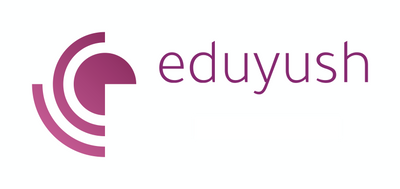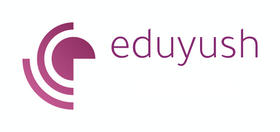Certificate holder insurance. Key Insights
Certificate Holder Insurance: A Comprehensive Guide
Certificate holder insurance is a crucial aspect of risk management for businesses and individuals involved in various contractual agreements. This advanced guide, supported by research and expert insights, delves into the intricacies of certificate holder insurance, its benefits, and its implications.
What is Certificate Holder Insurance?
Certificate holder insurance refers to a document issued by an insurer that provides proof of insurance coverage. It names a third party, the certificate holder, with a vested interest in the insured party's coverage. This document is often used when one party, typically a contractor or service provider, must show evidence of insurance to another party, usually the client or property owner.
Key Elements of Certificate Holder Insurance
- Policy Details: Includes information about the insurance policy, such as policy number, effective dates, and coverage limits.
- Insured Party: The individual or entity covered by the insurance policy.
- Certificate Holder: The third party who receives the certificate and is interested in the insurance coverage.
- Type of Insurance: Specifies the coverage provided, such as general liability, workers' compensation, or automobile insurance.
- Coverage Verification: Confirms that the insured party has the specified coverage.
Importance of Certificate Holder Insurance
- Risk Management protects the certificate holder from potential financial losses caused by the insured party's actions or negligence.
- Compliance: Ensures contractors and service providers meet the insurance requirements outlined in contracts and agreements.
- Trust Building: Establishes credibility and trust between the contracting parties by assuring adequate insurance coverage.
Legal and Regulatory Considerations
Legal and regulatory frameworks often dictate the requirement for certificate holder insurance, especially in industries such as construction, real estate, and professional services. Compliance with these requirements mitigates risk and ensures adherence to industry standards.
Benefits for Certificate Holders
- Financial Protection: Reduces the financial impact of potential claims arising from the insured party's actions.
- Verification of Coverage: Provides a formal document verifying that the insured party has the necessary coverage.
- Enhanced Contractual Security: Strengthens contractual agreements by ensuring all parties have appropriate insurance coverage.
Challenges and Considerations
- Misunderstandings about Coverage: Certificate holders must understand that the certificate of insurance is not an insurance policy but proof of coverage.
- Policy Changes: Insurance policies can change, and certificate holders must stay updated on any modifications that might affect their coverage.
- False Sense of Security: Relying solely on the certificate without verifying the coverage details can lead to potential risks.
Research and Expert Insights on certificate holder insurance
Here are some research papers and articles that provide in-depth insights into the importance of certificate holder insurance and risk management:
-
Risk Management and Its Influence on Insurance Company
- Abstract: This paper discusses the essence of risk management in insurance, emphasizing the importance of defining and estimating risks accurately to prevent and control them effectively.
- Authors: Florea Ianc Maria Mirabela, Lapadusi Mihaela Loredana
-
The Insured's Post-Contract Duty of Notification of Increase of Risk
- Abstract: This study explores the legal duties of the insured to notify insurers about increased risks, focusing on comparative aspects of Iranian, Chinese, and European insurance laws.
- Authors: Mansour Amini, Mohammadreza Hazeghi Aghdam
- Link: Read more
-
Economic Assessment of Insurance through the Process of Risk Management
- Abstract: This paper evaluates the economic importance of insurance in risk management, highlighting decision-making processes based on risk assessment and management strategies.
- Authors: J. Miloradić, B. Vasić
-
Operational Risk Management for Insurers
- Abstract: This article discusses the importance of operational risk management for insurers, particularly under the Solvency II regulations, and reviews methodologies for analyzing and managing these risks.
- Authors: M. I. M. Torre-Enciso, Rafael Hernández Barros
- Link: Read more
-
Efficiency of Insurance Firms with Endogenous Risk Management and Financial Intermediation Activities
- Abstract: This study investigates how risk management and financial intermediation activities create value for insurers by enhancing economic efficiency through cost reductions.
- Authors: J. Cummins, G. Dionne, R. Gagné, A. Nouira
- Link: Read more
-
The Role of Insurance in Enterprise Risk Management
- Abstract: This chapter examines how insurance contributes to enterprise risk management, focusing on reducing financial distress and ensuring funds for future investments.
- Author: Greg Niehaus
- Link: Read more
How to Add a Certificate Holder to Your Insurance Policy
Adding a certificate holder to your insurance policy is a straightforward process. Still, it involves several steps to ensure that the certificate holder is appropriately documented and receives the necessary proof of insurance. Here’s a detailed guide on how to add a certificate holder to your insurance:
Steps to Add a Certificate Holder
-
Review Your Insurance Policy:
- Before making any changes, review your current insurance policy to understand the terms and conditions, including any provisions for adding certificate holders.
- Check for any specific requirements or restrictions related to adding certificate holders.
-
Contact Your Insurance Provider:
- Reach out to your insurance agent or the customer service department of your insurance company.
- Inform them of your need to add a certificate holder to your policy.
-
Provide Necessary Information:
-
You will need to provide specific details about the certificate holder, including:
- The name and address of the certificate holder.
- The reason for adding the certificate holder (e.g., a contractual requirement, project-specific needs).
- Any specific insurance requirements the certificate holder has requested (e.g., coverage limits, types of coverage).
-
You will need to provide specific details about the certificate holder, including:
-
Request the Certificate of Insurance:
- Ask your insurance provider to issue a Certificate of Insurance (COI) that names the certificate holder.
-
Ensure that the COI includes all relevant information, such as:
- Policy number
- Effective dates of coverage
- Types of coverage and coverage limits
- Additional insured status, if applicable
-
Review the Certificate of Insurance:
- Carefully review the COI once it is issued to ensure all information is accurate and meets the certificate holder's requirements.
- Verify that the certificate holder’s information is correctly listed and that all necessary coverage details are included.
-
Distribute the Certificate of Insurance:
- Provide the COI to the certificate holder as proof of insurance.
- Keep a copy of the COI for your records and future reference.
-
Maintain Communication:
- Stay in regular contact with the certificate holder to address any questions or concerns they may have regarding the insurance coverage.
- Notify your insurance provider of any changes in the project or contractual requirements that may affect the certificate holder’s status.
Why Adding a Certificate Holder is Important
-
Contractual Compliance:
- Many contracts, especially in the construction and real estate industries, require proof of insurance to protect all parties involved in a project or agreement.
-
Risk Management:
- Naming a certificate holder helps manage and transfer risk by ensuring all parties have adequate insurance coverage.
-
Building Trust:
- Providing a COI to a certificate holder builds trust. It demonstrates your commitment to fulfilling contractual obligations and protecting mutual interests.
Additional Tips
- Request Additional Insured Status: If the certificate holder requires additional insured status, ensure this is clearly stated in the COI. This provides the certificate holder with additional rights under your insurance policy.
- Regular Updates: Keep the certificate holder updated on any changes to your insurance policy, such as renewals or modifications to coverage limits.
- Legal and Regulatory Compliance: Ensure that adding certificate holders complies with any relevant legal or regulatory requirements in your industry or region.
By following these steps, you can effectively add a certificate holder to your insurance policy, providing them with the necessary proof of coverage and ensuring compliance with contractual and legal requirements.
Conclusion
Certificate holder insurance is vital for managing risk and ensuring compliance in various contractual relationships. Businesses and individuals can better protect themselves and their partners by understanding its essential elements, benefits, and challenges. Regular verification and staying informed about policy changes are essential to maintaining adequate coverage.
Our other Insurance blogs
- Sample letter of appeal for reconsideration of insurance claims
- How to increase insurance agent productivity
- UAE unemployment insurance
- Insurance cancellation letter
- Insurance claim letter format
- Insured closing letter formats
- ACORD cancellation form
- Provision for insurance claim
- Cricket insurance claim
From the blog
View allFAQs
Follow these links to help you prepare for the ACCA exams
Follow these blogs to stay updated on IFRS
Use these formats for day to day operations
- Account closure format
- Insurance claim letter format
- Transfer certification application format
- Resignation acceptance letter format
- School leaving certificate format
- Letter of experience insurance
- Insurance cancellation letter format
- format for Thank you email after an interview
- application for teaching job
- ACCA PER examples
- Leave application for office
- Marketing manager cover letter
- Nursing job cover letter
- Leave letter to class teacher
- leave letter in hindi for fever
- Leave letter for stomach pain
- Leave application in hindi
- Relieving letter format
Link for blogs for various interview questions with answers
- Strategic interview questions
- Accounts payable interview questions
- IFRS interview questions
- CA Articleship interview questions
- AML and KYC interview questions
- Accounts receivable interview questions
- GST interview questions
- ESG Interview questions
- IFRS 17 interview questions
- Concentric Advisors interview questions
- Questions to ask at the end of an interview
- Business Analyst interview questions
- Interview outfits for women
- Why should we hire you question
- Leave application for office
- Leave application for school
- Leave application for sick leave
- Leave application for marriage
- leave application for personal reasons
- Maternity leave application
- Leave application for sister marriage
- Casual leave application
- Leave application for 2 days
- Leave application for urgent work
- Application for sick leave to school
- One day leave application
- Half day leave application
- Leave application for fever
- Privilege leave
- Leave letter to school due to stomach pain
- How to write leave letter
- Sample letter of appeal for reconsideration of insurance claims
- How to increase insurance agent productivity
- UAE unemployment insurance
- Insurance cancellation letter
- Insurance claim letter format
- Insured closing letter formats
- ACORD cancellation form
- Provision for insurance claim
- Cricket insurance claim
- Insurance to protect lawsuits for business owners
- Certificate holder insurance
- does homeowners insurance cover mold
- sample letter asking for homeowner right to repair for insurance
- Does homeowners insurance cover roof leaks











Leave a comment